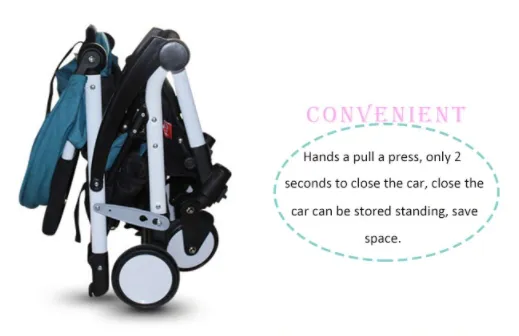
- Afrikaans
- Albanian
- Amharic
- Arabic
- Armenian
- Azerbaijani
- Basque
- Belarusian
- Bengali
- Bosnian
- Bulgarian
- Catalan
- Cebuano
- Corsican
- Croatian
- Czech
- Danish
- Dutch
- English
- Esperanto
- Estonian
- Finnish
- French
- Frisian
- Galician
- Georgian
- German
- Greek
- Gujarati
- Haitian Creole
- hausa
- hawaiian
- Hebrew
- Hindi
- Miao
- Hungarian
- Icelandic
- igbo
- Indonesian
- irish
- Italian
- Japanese
- Javanese
- Kannada
- kazakh
- Khmer
- Rwandese
- Korean
- Kurdish
- Kyrgyz
- Lao
- Latin
- Latvian
- Lithuanian
- Luxembourgish
- Macedonian
- Malgashi
- Malay
- Malayalam
- Maltese
- Maori
- Marathi
- Mongolian
- Myanmar
- Nepali
- Norwegian
- Norwegian
- Occitan
- Pashto
- Persian
- Polish
- Portuguese
- Punjabi
- Romanian
- Russian
- Samoan
- Scottish Gaelic
- Serbian
- Sesotho
- Shona
- Sindhi
- Sinhala
- Slovak
- Slovenian
- Somali
- Spanish
- Sundanese
- Swahili
- Swedish
- Tagalog
- Tajik
- Tamil
- Tatar
- Telugu
- Thai
- Turkish
- Turkmen
- Ukrainian
- Urdu
- Uighur
- Uzbek
- Vietnamese
- Welsh
- Bantu
- Yiddish
- Yoruba
- Zulu
Nov . 18, 2024 13:36 Back to list
e bike factory
The Revolution of Electric Bicycles A Look into the E-Bike Factory
In recent years, the world has witnessed an unprecedented surge in the popularity of electric bicycles, commonly known as e-bikes. As cities grapple with pollution, traffic congestion, and the need for sustainable transportation options, e-bikes have emerged as a compelling solution. Behind this trend lies the intricate workings of e-bike factories, which play a pivotal role in manufacturing these innovative vehicles.
A Brief Overview of E-Bikes
Electric bicycles are traditional bicycles that incorporate an electric motor to assist with propulsion. This technology allows riders to travel longer distances with less physical exertion, making cycling accessible to a broader demographic. E-bikes come in various forms—ranging from commuter models suited for urban environments to rugged designs meant for off-road adventures. What unites them is the combination of pedal power and electric assistance, making them an attractive choice for many.
The E-Bike Production Process From Concept to Completion
The journey of an e-bike begins long before it reaches the showroom floor. E-bike factories are equipped with modern technology and skilled professionals who collaboratively bring these machines to life. The production process typically involves several key stages
1. Design and Development The creation of an e-bike starts with innovative design. Engineers and designers utilize cutting-edge software to create a blueprint that balances functionality, aesthetic appeal, and ergonomic comfort. Feedback from potential users is often integrated into the design process to ensure the final product meets consumer needs.
2. Component Sourcing E-bikes are composed of various components, including electric motors, batteries, frames, and wheels. Factories often rely on a network of suppliers to source high-quality materials. Sustainability has become increasingly important; thus, many manufacturers are seeking environmentally-friendly materials that minimize their ecological footprint.
3. Assembly After the components are sourced, they are brought to the assembly line. Skilled workers meticulously piece together each e-bike, ensuring that every element fits perfectly and functions as intended. Automation technology is frequently employed to enhance efficiency and precision, though human oversight remains essential.
e bike factory

4. Quality Control Quality assurance is critical in the e-bike manufacturing process. Each bike undergoes rigorous testing to verify that it meets safety standards and performance expectations. This includes evaluating the motor’s power, battery life, braking systems, and overall build quality. Factories that prioritize quality control are more likely to build a loyal customer base.
5. Distribution Once the e-bikes have been assembled and tested, they are prepared for distribution. Manufacturers often collaborate with retailers to ensure that the bikes reach consumers efficiently. Many e-bike brands also sell directly online, allowing customers to purchase their bikes with ease and convenience.
The Impact of E-Bikes on Society
E-bikes have profound implications for urban mobility. They provide a practical alternative to cars, allowing individuals to navigate congested city streets more efficiently. As a result, cities are witnessing a reduction in traffic congestion and a cleaner urban environment. Furthermore, e-bikes encourage physical activity and foster a sense of community among riders.
Additionally, e-bikes can play a significant role in reducing carbon emissions. With more individuals opting for e-bikes over traditional vehicles, the reliance on fossil fuels diminishes, leading to cleaner air and a healthier planet. Governments worldwide are recognizing the benefits of e-bikes and are implementing policies and incentives to encourage their adoption.
Challenges Facing E-Bike Manufacturers
Despite the promising outlook, e-bike factories are not without challenges. Competition in the market is fierce, with numerous brands vying for consumer attention. As technology evolves, manufacturers must stay ahead by innovating constantly. Moreover, navigating international trade regulations and supply chain disruptions can pose significant hurdles for production.
Conclusion
The rise of e-bikes represents a transformative shift in the way we approach transportation. E-bike factories are at the forefront of this revolution, combining engineering expertise with a commitment to sustainability. As more people embrace the benefits of electric bicycles, the future of urban mobility looks brighter than ever. By investing in e-bike technology and manufacturing, we are not just creating a product; we are contributing to a healthier, more sustainable world.
-
The Ultimate Kids' Four-Wheeler Experience
NewsJul.09,2025
-
The Ultimate Guide to Mountain Bikes: Gear Up for Your Ride
NewsJul.09,2025
-
The New Age of Cycling: Electric Bikes for Every Rider
NewsJul.09,2025
-
The Best Kids Bicycles: Ride in Style and Safety
NewsJul.09,2025
-
The Best 3-Wheel Scooters for Kids: Fun, Safety, and Adventure
NewsJul.09,2025
-
Revolutionize Your Ride: Affordable Electric Bikes
NewsJul.09,2025
-
Finding the Perfect Mountain Bike for Every Rider
NewsJul.09,2025



